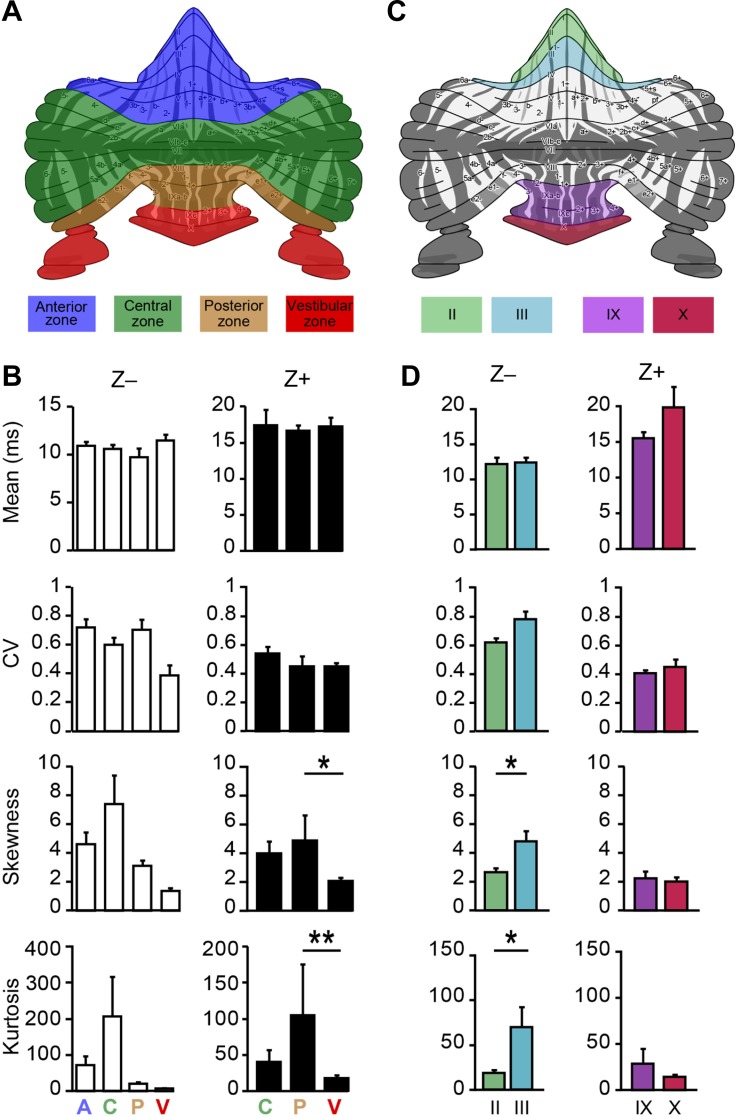Fig. 6.
Differences in spiking activity between PCs with the same zebrin identity. A: based on cerebellar development and discontinuity of the zebrin bands, PCs can also be subdivided in four functionally distinct regions, called transverse zones: the anterior (A), central (C), posterior (P), and vestibular (V) zone. Schematic drawing adapted from Sugihara and Quy (2007) and Zhou et al. (2014). B: analysis of the four moments describing a distribution: mean, variance (here CV), skewness, and kurtosis of ISI distributions per transverse zone for Z− and Z+ PCs. Whereas Z− cells in A, C, P, and V (n = 24, 14, 4, and 2 cells, respectively) are not significantly different, Z+ cells (C, P, and V, n = 4, 4, and 42 cells, respectively) in the posterior zone have a higher skewness and kurtosis of ISI distributions (1-way ANOVA followed by Tukey's post hoc test) compared with the vestibular transverse zones. C: similarly, the ISI distribution shapes of PCs with the same zebrin identity, but from different lobules, were compared. D: analysis of recordings from the confirmed Z− PCs of lobules II (n = 6 cells) and III (n = 10) and of the Z+ PCs of lobules IX (n = 19) vs. X (n = 16) revealed that significant differences can occur within subpopulations of PCs with the same zebrin identity, since Z− PCs of lobule III have a higher skewness and kurtosis than those of lobule II. *P < 0.05 and **P < 0.01.

